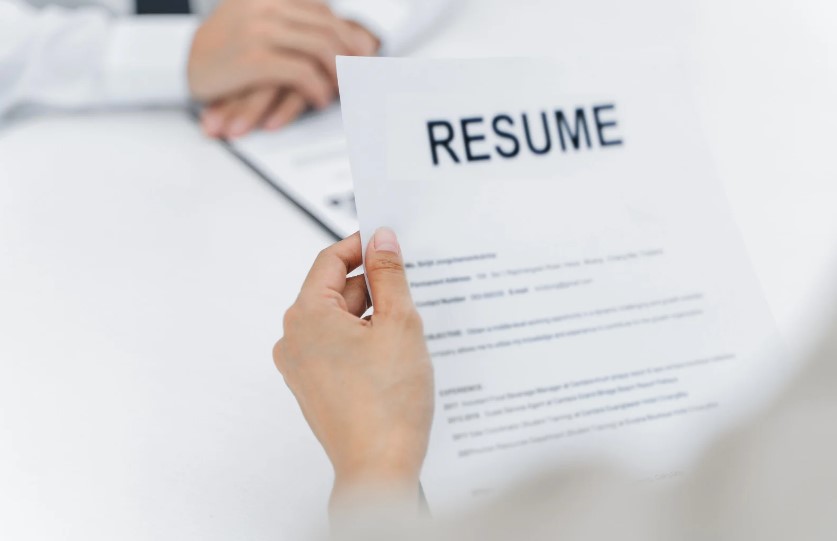
A blank page can be daunting, but take a deep breath. YOU are not a blank page. Crafting your first resume is a chance to showcase your strengths, skills, and personality and present yourself to future employers. With the right approach, you’ll have a resume that helps you stand out and opens doors to exciting opportunities.
Let’s walk through the essentials of how to write your first resume, share key tips to make it shine, and point you to helpful resources that provide free templates to get you started.
Formatting Considerations
- Choose the Right Format Choosing the right resume format for students is key. The best formats for entry-level job seekers are::
- Chronological (most common): Lists your experience starting with the most recent job or education.
- Functional: Focuses on your skills and is great for those with limited experience.
- Combination: Blends skills with a chronological timeline, offering a flexible approach.
*Pro Tip: As a first-time job seeker, the functional or combination formats can help you emphasize skills over work history if you haven’t held many jobs yet.
Step by Step Guide to Resume Writing
- Start with a Strong Heading
- Include your full name, phone number, email address, and LinkedIn profile (if you have one) at the top. Make it clear and easy to read—hiring managers should be able to find your info instantly.
- Write a Compelling Summary
- Your summary should be short—2-3 sentences that capture who you are and what you offer. Focus on your strengths, career goals, and the value you can bring to the employer. For example:
“Motivated recent graduate with strong communication skills and hands-on experience through internships and school projects. Eager to contribute to a dynamic team and grow in the field of digital marketing.”
- Your summary should be short—2-3 sentences that capture who you are and what you offer. Focus on your strengths, career goals, and the value you can bring to the employer. For example:
- Highlight Your Skills
- Skills are a huge part of what employers are looking for, especially if you don’t have much formal work experience. Include both hard skills (technical abilities, like Excel, coding, or graphic design) and soft skills (communication, teamwork, problem-solving).
*Pro Tip: Look at the job description of roles you’re applying to and include skills that match what employers are seeking.
- Skills are a huge part of what employers are looking for, especially if you don’t have much formal work experience. Include both hard skills (technical abilities, like Excel, coding, or graphic design) and soft skills (communication, teamwork, problem-solving).
- Include Relevant Experience
- You might not have years of professional experience, but that doesn’t mean you have nothing to include! Add internships, volunteer work, part-time jobs, school projects, or extracurricular activities. Focus on what you accomplished in each role and how it ties into the job you’re applying for.
Example: Social Media Intern, XYZ Company (Summer 2023)- Developed and scheduled content that boosted engagement by 30%.
- Assisted in launching a TikTok campaign that grew the company’s following by 10%.
- You might not have years of professional experience, but that doesn’t mean you have nothing to include! Add internships, volunteer work, part-time jobs, school projects, or extracurricular activities. Focus on what you accomplished in each role and how it ties into the job you’re applying for.
- List Your Education
- Include your school name, degree, and graduation year. If you don’t have a lot of work experience, you can also list relevant courses or academic achievements.
Example: BA in Business Administration, University of XYZ (Expected 2025)
- Include your school name, degree, and graduation year. If you don’t have a lot of work experience, you can also list relevant courses or academic achievements.
- Keep It Simple and Concise
- Your resume should be one page if possible, especially if it’s your first. Use bullet points and keep the layout clean and easy to scan. Don’t overstuff it with every detail—focus on what’s most important and relevant to the job.
Useful Resources
Here are some free, easy-to-use tools for finding resume templates that will make the design process simple and professional:
- Canva – Offers a variety of customizable resume templates with modern, sleek designs. You can easily tweak the colors and layout to match your personal style. Check out Canva’s resume templates.
- Google Docs – Provides several clean, no-frills resume templates that you can access directly in Google Drive. This is great for collaboration and updates on the go. Browse Google Docs resume templates here.
- Zety – A user-friendly site that provides interactive templates with tips for each section to help you customize. Explore Zety’s templates
- ResumeGenius – Offers free templates and a step-by-step builder
- Microsoft Word – If you are using Word, take advantage of a wide range of pre-built templates ready to go. Simply open Word, search for “resume” in the template search bar, and you’ll find options that fit your style.
- Microsoft PowerPoint – Similarly, if you are using PowerPoint, take advantage of of pre-built templates ready to go. Simply select new and search for “resume” you’ll find options a variety of options.
*Pro Tip: No matter what format you use, in order to assure you maintain control of how your resume is presented and ensure it’s accessible and professional, be sure to save your resume as a PDF. Consider personalizing the name of the attachment for the company (JaneDoe.AccountExec.CompanyX). Saving as a PDF preserves formatting, ensuring consistency on every device or software. This avoids formatting issues that can arise when using Word or other editable formats. PDF files can be opened on almost any device or operating system, which ensures that hiring managers or recruiters can easily view, as you intended. Most Applicant Tracking Systems (ATS) accept PDFs, allowing for smooth processing of your resume by recruiting systems.
Let’s Review
💡FAQ: Writing Your First Resume
💬 What should my resume include?
✅ A strong first resume should have a clear header, summary statement, skills section, education, and relevant experience (like internships or volunteer work).
💬 How do I make a resume with no work experience?
✅ Focus on transferable skills from school projects, leadership roles, or volunteer work. Use a functional resume format to highlight skills instead of job history.
💬 What is the best resume format for students?
✅ The best resume format for students is the functional resume (which highlights skills) or combination resume (which blends skills with experience).
Your resume is your chance to make a great impression. Once you have your first draft complete, check to make sure you have avoided these common resume mistakes. Keep it focused, emphasize your skills and accomplishments, and choose a template that reflects your personality. Remember, this is just the start—you can always update and refine your resume as you gain more experience. Now that you’ve got the tools, start building your resume with confidence. The workforce is ready for you—are you ready for it?
Looking for additional support? Rise Consulting LLC, creators of Your First Real Job, provides expert career coaching and networking assistance. Discover what’s possible with personalized guidance—learn more at Rise Consulting LLC!

